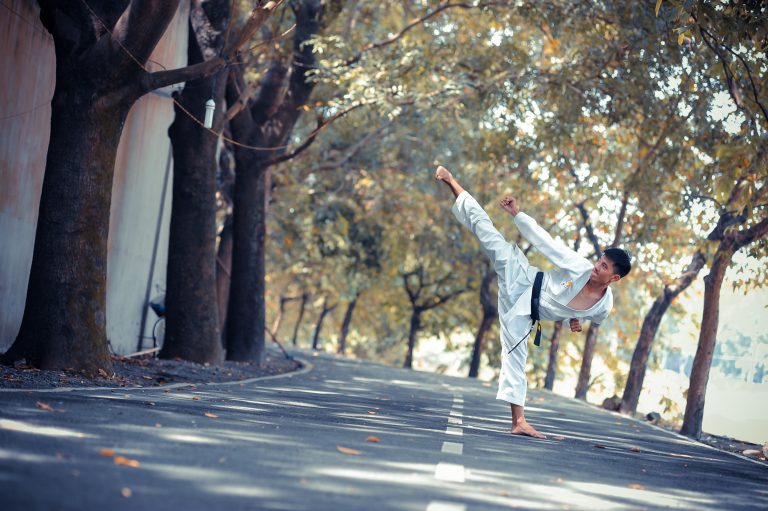What is the Color of Karate Belts: A Comprehensive Guide
Karate is a martial art that originated in Japan and has spread across the globe as a popular sport and form of self-defense. It encourages mental and physical development, and the ranking system is an essential part of its tradition. Karate uses a color-coded belt system to represent a practitioner’s level of skill and experience. If you’re new to karate, it’s essential to understand the meaning behind each colored belt.
The Origins of the Belt System
The belt system we use today was first introduced by Jigorō Kanō, the founder of Judo. He created a system of colored belts to represent a student’s progress and differentiate levels of competence. From there, the belt system spread throughout the martial arts community, and it is now a widely recognized standard across various disciplines.
The Meaning Behind Each Belt Color
The belt colors in karate are arranged in a specific order, indicating the color coding of the ranking system. Here is a comprehensive guide detailing the meaning behind each belt color:
White Belt (Beginner)
The white belt is the first karate belt a practitioner receives. It signifies the beginning of the martial arts journey and represents a student’s innocence, lack of knowledge, and untapped potential.
Yellow Belt (Novice)
The yellow belt is the second rank in karate, and it represents the student’s growth and progress from the initial phase of training. They have now acquired some basic knowledge and are fit for tougher challenges.
Orange Belt (Intermediate)
The orange belt recognizes the student’s further growth and development into an intermediate level of karate. The student has demonstrated a more advanced level of technique and is working to refine their skills.
Green Belt (Advanced Intermediate)
The green belt signifies the student’s strong development and the accomplishment of core techniques, which require a higher degree of physical and mental dexterity. The student has now achieved an advanced intermediate level of skill.
Blue Belt (Second Year Student)
The blue belt is used in some karate schools, and it represents a level between the green and brown belts. It specifies the intermediate rank for a student who has been training for at least two years.
Brown Belt (Expert)
The brown belt is the next step after the intermediate level, and it shows the student’s mastery of the karate techniques. Typically, the time spent on improving the moves typically takes longer than the stages toward the higher colored ranks.
Black Belt (Mastery)
The black belt is the highest rank awarded in karate, and it represents a level of mastery in the art. It is divided into 10 levels. The first level signifies a basic black belt, and after that, practitioners can earn levels of mastery up to the tenth level known as the Judan belt.
What Is the Color of Karate Belts?
Introduction
Karate is a popular martial art that originated in Okinawa, Japan, and has since spread around the world. One of the most recognizable features of karate is the colored belts worn by practitioners. The karate belt system consists of a series of ranks, each represented by a different colored belt. In this blog post, we will answer some of the most frequently asked questions about the colors of karate belts.
What Do the Different Colors of Karate Belts Mean?
The colors of karate belts represent different levels of proficiency or grades. Each level has its own set of requirements and standards that must be met before a student is eligible to advance to the next level. Here’s a breakdown of the color system:
1. White Belt: This is the starting point for all students. It represents the beginning of the journey and symbolizes purity, innocence, and a beginner’s mind.
2. Yellow Belt: After gaining some basic knowledge and skills, students move on to the yellow belt. This color represents daylight and the breaking of the darkness to gain knowledge.
3. Orange Belt: Orange is the color of the sun as it rises in the morning. The orange belt represents the sun rising on the new skills the student is learning.
4. Green Belt: Green is the color of growth and represents a time of growth and development in the student’s abilities and techniques.
5. Blue Belt: Blue is the color of the sky, and like the sky, the blue belt represents vastness and unlimited potential in the student’s martial arts journey.
6. Purple Belt: Purple is a combination of blue and red, symbolizing the student’s growth and preparation for higher levels. This is a time of refining techniques.
7. Brown Belt: The brown belt represents the earth and the time honored traditions of karate as the student approaches mastery.
8. Black Belt: Black is the ultimate symbol of mastery in karate. Obtaining a black belt takes years of dedication, hard work, and commitment. It is a symbol of the beginning of one’s journey towards truly mastering karate.
What Happens After Receiving a Black Belt?
Achieving a black belt doesn’t mean one has reached the end of the road. In fact, it is just the beginning of a new journey in becoming a well-rounded martial artist. At this level, one can choose to specialize in a specific area of karate or continue to explore different aspects of martial arts.
How Long Does It Take to Receive a Black Belt?
The time it takes to receive a black belt in karate varies from person to person and from one martial arts school to another. Typically, it can take anywhere from 3 to 5 years of consistent training and dedication to earn a black belt.
Are There Any Other Belt Colors in Karate?
Yes, some martial arts schools have added extra belt colors like grey, for example, to signify a time to refine one’s skills before proceeding to the next level. However, the traditional color system consists of the colors mentioned in this blog post.
How to Understand the Different Colors of Karate Belts
Karate is an ancient martial art that originated in Okinawa, Japan. It involves a series of movements and techniques that are used defensively and offensively. One of the most recognizable features of Karate is the color of belts used to signify a person’s level of proficiency. For beginners, it can be challenging to understand the different colors of Karate belts and what they mean. In this article, we will discuss the different colors of Karate belts and how to understand them.
Understanding the Purpose of Karate Belts
Karate belts are a way to indicate the progress of the students as they advance from one level to the next. The color of the belt indicates the degree of proficiency of the student. The higher the level of proficiency, the darker the color of the belt becomes. The ultimate goal of Karate is to achieve a black belt, which is the highest level of proficiency in this martial art.
The Different Colors of Karate Belts
There are different colors of Karate belts, and each color has a specific meaning. Here are the different colors of Karate belts in order of proficiency:
White Belt
The white belt is the starting point for every student learning Karate. It signifies purity and innocence, as the student does not have any knowledge of Karate yet. The white belt is also known as the beginner’s belt.
Yellow Belt
After a few months of training and learning, the student will progress to the yellow belt. The yellow belt signifies the first rays of sun or the beginning of a new day. It represents the progress that the student has made since starting Karate.
Orange Belt
The Orange Belt is the next level, and it is a progression from the yellow belt. The color orange represents the warmth and radiance of the sun, which reflects the enthusiasm and energy of the student.
Green Belt
The green belt represents growth and development, just like the color of trees in the growing season. At this level, the student has demonstrated significant progress and has acquired a certain degree of proficiency in Karate.
Blue Belt
The blue belt signifies the sky and represents a bridge between the lower and higher levels of proficiency. At this point, the student has acquired advanced techniques and has reached a higher level of proficiency.
Purple Belt
The purple belt represents the vastness and depth of the ocean. At this point, the student has a deeper understanding of Karate and has acquired advanced techniques and knowledge.
Red Belt
The red belt signifies danger and risk, and represents a warning to the student to continue to work hard and practice. The red belt is often seen as a stepping stone to the highest level in Karate.
Brown Belt
The brown belt signifies maturity and humility. At this level, the student has acquired a high degree of proficiency and shows a deep understanding of Karate.
Black Belt
The black belt is the highest level of proficiency in Karate, and it is the ultimate goal for every student. It represents mastery and proficiency in all aspects of Karate.
Conclusion
Now that you understand the different colors of Karate belts, you can appreciate the significance of each belt color and what it represents. Remember that the belt is not just a piece of cloth, but a symbol of your progress and dedication to Karate. Keep practicing and working hard, and one day, you will achieve the ultimate goal of a black belt.
Inhaltsverzeichnis






